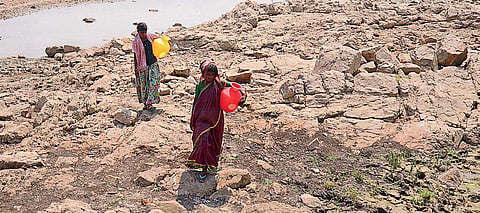

BENGALURU: Consecutive droughts experienced in different districts of Karnataka is taking a toll, especially on women and children, according to a report by the United Nations Children’s Fund (UNICEF). The droughts have left “about one-third (36 per cent) of children under 5 years of age stunted or too short for their age”, while 26 per cent are wasted - too thin for their height.This is according to a report by UNICEF’s Disaster Risk Reduction Section, which was published in “Drought Management Strategies - Compendium of Best Practices Adopted in Drought Management”, released by Karnataka State Natural Disaster Monitoring Cell. “Karnataka has encountered successive droughts during the last 10 years adversely impacting nutritional status of women and children significantly,” the paper said. It was released during the two-day national conference on drought management strategies, organised by the state government and KSNDMC.
High prevalence of stunting
According to a report by Mahalanobis National Crop Forecast Centre, 16 of the 24 districts in the country with chronic drought were in Karnataka. As a result, the prevalence of childhood stunting ranged widely in Karnataka - “from 19% in Mandya district to 56% in Koppal”. Similarly, in Kalaburagi and Yadgir the prevalence was over 50% while it varied between 40-50% in six other districts. “Districts with a high prevalence of stunting are in northern half of the state,” the report said.
The UNICEF report noted that 26% of children are too thin for their height, and about 35% were underweight due to either chronic or acute undernutrition triggered by the droughts. “Karnataka is among the states with the highest wasting levels across the country and has shown an increase of 48% in the last decade, which is the highest in the country,” it said.
With respect to the status of nutrition among women and adolescent girls, one-fifth or 20% of all women aged 15-45 years had low body mass index, indicative of undernutrition. In this case, more number of such cases were reported in districts such as Yadgir and Koppal, which have been hit by consecutive droughts.
The report also noted that such health issues were prevalent in regions which depended mostly on rain-fed agriculture. “A cascading effect of drought is seen through reduced production, reduced availability of food, fodder and drinking water, worsening human and animal health, their mortality and out-migration,” it said.